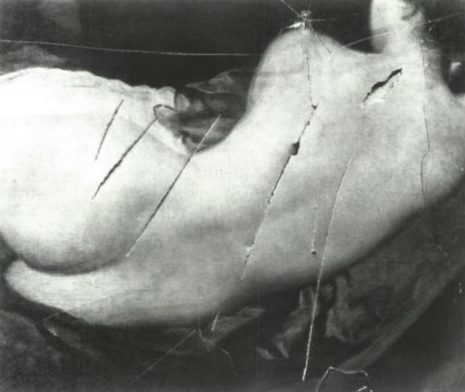This portrait is of someone whose body is seriously disabled (she is an ALS/MND sufferer). My idea was to be honest about her disability, which for me meant showing her body as it is, without hiding anything yet in a tactful and respectful manner. So, my solution was inspired by Velásquez's or Rubens' "Venus": a naked "Venus", symbol of femininity BUT showing only her back while... she is watching US via her mirror! So, when visitors (mostly male in those days) were expecting to peep at an attractive naked female body, in fact the situation was reversed: watchers they weren't anymore, they were the watched ones! This painting was very feminist indeed.
In my painting, because of her handicap, it was decided that the mirror would be locally cracked, hinting at her disabled body.
In Velásquez times (mid 17th century) this painting was so provocative that it managed to escape the Spanish Inquisition only because it remained hidden in a private collection.
 Ironically it didn't survive well the 20th century when in 1914, the militant suffragette and feminist Mary Richardson slashed Velásquez's masterpiece in protest of women's situation (see photograph).
Ironically it didn't survive well the 20th century when in 1914, the militant suffragette and feminist Mary Richardson slashed Velásquez's masterpiece in protest of women's situation (see photograph).
This composition seems to unsettle many. The subject of my portrait has refused to "endorse" it. It will therefore remain anonymous.
Disabled artist Alison Lapper did create controversy when a statue of her naked body (born with short legs and no arms) was erected at Trafalgar Square in... 2005.




I really like your ideas on how to show the real inner beauty of your client without her disbility consuming the whole subject.
ReplyDeleteI wish you had some way to do this with Stephen Hawking. Somehow, his inner core must be of great integrity, truth and beauty. Yet, his disability is what is remembered.